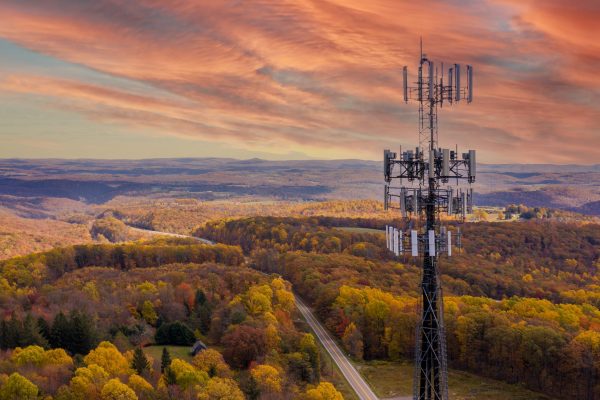
CASE STUDY: High-Definition Video Broadcasting with QCLs
High definition video broadcasting requires high precision and stable control of the quantum cascade laser in signal transmission. Wavelength Electronics’ QCL driver, QCL2000 LAB, enabled precise current control with minimal electronic noise from the QCL. The driver also provides analog modulation of up to 2-3 MHz for wavelength modulation, allowing the QCL to emit a constant, uninterrupted signal that is subsequently modulated for communication purposes. The transmission was studied for several hours at a time, indicating the long term stability of the QCL2000 LAB current driver. In addition, the stability of the QCL bias current is critical for consistent electrical bandwidth. The low noise, high stability QCL2000 LAB, can precisely deliver up to 2 A to the laser. This benchtop instrument exhibits noise performance of 1.3 μA RMS up to 100 kHz with an average current noise density of 4 nA/√Hz. Wavelength Electronics’ QCL driver enables high definition video broadcasting with a data rate of 1.485 Gbits/s with low noise and stable laser output. This makes the developed QCL system a reliable tool for real field applications in free-space communication.
Subscribe to our newsletter for tips, techniques & product updates.
CASE STUDY: Mapping H2O Transport with Tomographic Absorption Spectroscopy
Researchers from the School of Aeronautics and Astronautics in Chengdu, China and the Chinese University of Hong Kong have developed a jet flow, tomographic absorption spectroscopy (TAS) platform to study H2O transport in a non-reactive jet flow with various conditions. By combining tomography and absorption spectroscopy techniques with a laser with center wavelength of 1368.598 nm, two-dimension (2D) contour imaging was created to display H2O mole fraction distribution from the laminar jet into ambient air. The reconstructed distributions at different heights above the jet flow nozzle, as well as the 2D contour, matched well with and were validated with computational fluid dynamics (CFD) simulations. This research shows the great potential that TAS has in the field of mass transfer and scalar field of gaseous flows.
Wavelength Electronics’ LDTC0520 integrated controller provided the stable drive current and temperature control for the DFB laser ensuring high temperature accuracy and that minimal noise was added to the photodetector after TAS. Constant current to the laser delivered constant center wavelength for the tomography absorption measurements. The LDTC0520 is ideal for sensitive gaseous process characterization with low noise and stable current and temperature output.
Plasma applications heavily depend on atomic oxygen densities, but knowing those densities requires precise and accurate diagnostic techniques. Researchers from Germany have developed the first implementation of THz QCLs for high-resolution absorption spectroscopy on plasmas, detecting absolute densities of ground state atomic oxygen at the fine structure transition at 4.75 THz. Validated with three transitions of ammonia close to this atomic oxygen line, this technique and measurement accuracy is within 5% and the detection limit is 2 × 1013 cm-3. This shows promising results for applications in plasma research that replace existing methods for measuring atomic oxygen densities with compactness without requiring calibration. Not only does this research expand the understanding of physio-chemical behavior of atomic oxygen, it also proves the diagnostic capabilities of THz absorption spectroscopy with QCLs.
Measuring atomic oxygen density with high-resolution requires high precision and stable control of the quantum cascade laser when using terahertz frequencies. Wavelength Electronics’ QCL driver, QCL1000 OEM, enabled precise current control with minimal electronic noise from the QCL, consistent electrical bandwidth, and laser tuning by changing the drive current.
We invite you to contribute topic suggestions, questions, and general feedback. Wavelength will incorporate as much reader input as possible.
Click to Submit




